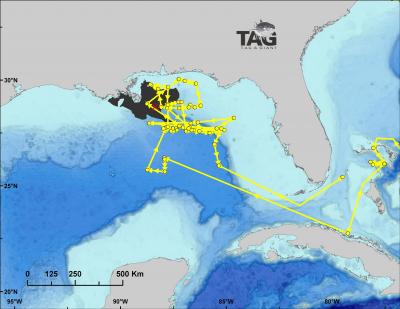
Flickr/<a href="http://www.flickr.com/photos/galant/3833161207/" target="_blank">thebittenword.com</a>
From the department of #butilovetunamelts comes this depressing news: The Consumers Union recently analyzed 42 samples of packaged tuna, and found that about half a can of white (albacore) tuna (which tends to have more mercury than light tuna) contains more mercury than the EPA’s recommended daily limit for women of childbearing age. A few other nuggets from the study:
- Every sample contained measurable levels of mercury, ranging from 0.018 to 0.774 parts per million. The FDA can take legal action to pull products containing 1 ppm or more from the market. (It never has, according to an FDA spokesman.)
- Samples of light tuna had 0.018 to 0.176 ppm and averaged 0.071 ppm. At that average, a woman of childbearing age eating 2.5 ounces would get less than the EPA’s limit, but for about half the tested samples, eating 5 ounces (about one can) would exceed the limit.
Given the fact that mercury content varies dramatically from can to can, Consumers Union recommended in 2006 that the FDA issue a warning that some cans of white tuna may contain levels that exceed those on which the daily consumption recommendations are based. The agency hasn’t issued any such warning yet.
In light of its recent tests, Consumers Union recommends that tuna-eaters adopt a more cautious approach than the FDA recommends:
Children less than 45 pounds: 0-4 ounces of light tuna or 0-1.5 ounces of white (albacore) tuna per week, depending on the child’s weight.
Children 45 pounds or more: About 4 to 12.5 ounces of light tuna or 1.5 to 4 ounces of white tuna per week, depending on the child’s weight.
Pregnant women: To be careful, avoid canned tuna. Choose a low-mercury fish instead.
Women of childbearing age: About 12.5 ounces of light tuna or 4 ounces of white tuna per week.
Men and older women: About 14.5 ounces of light tuna or about 5 ounces of white tuna per week should be OK, but people who eat fish more often would be prudent to stick to low-mercury types.
(For comparison, the FDA’s recommended limit for low-mercury seafood, including light tuna, is 12 ounces a week. For white tuna, it’s six ounces a week.)
Also worth noting: Bluefin tuna is not only one of the most mercury-laden kinds of tuna, it’s also one of the world’s most overfished sea creatures. A recent bad decision on 2011’s bluefin tuna quotas means this struggling fish is now even worse off.
Wondering which fish are healthy for you and the planet? I like Food and Water Watch’s Smart Seafood Guide.
Got a burning eco-quandary? Submit it to econundrums@motherjones.com. Get all your green questions answered by visiting Econundrums on Facebook here.

















